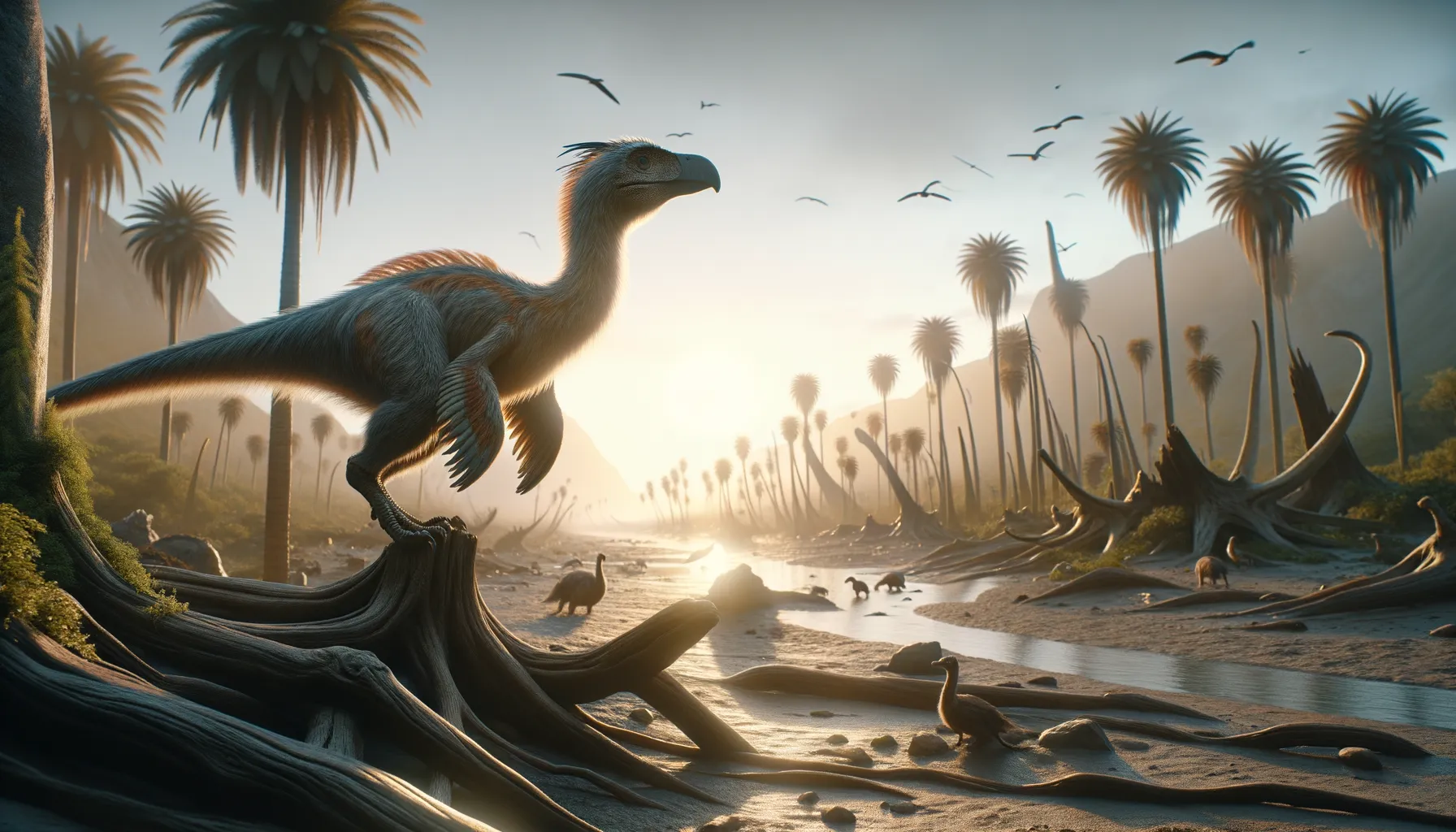
Zhongornis
A glimpse into flight's ancient origins.
Period
Cretaceous
Length
Approximately 20 centimeters, including the tail.
Height
About 10 centimeters, comparable to a sparrow.
Weight
Roughly 200 grams, like a small bird.
Zhongornis was a small, avian dinosaur from the Early Cretaceous period, notable for its bird-like characteristics and transitional features between dinosaurs and modern birds. Discovered in China, it provides crucial insights into the evolution of flight. This creature's anatomy suggests it was capable of powered flight, making it an important subject of study for paleontologists interested in avian evolution.
Diet
Zhongornis likely fed on insects and small invertebrates. Its diet would have been similar to that of small, insectivorous birds. Additionally, it may have consumed seeds or plant material when available.
Hunting
This dinosaur likely hunted by darting through the air to catch insects in flight. Its nimble movements would have allowed it to snipe unsuspecting prey from branches and leaves. It might have also foraged on the ground for small insects.
Environmental challenges
Zhongornis lived during the Cretaceous period, a time of diverse and changing ecosystems. It had to cope with fluctuating climates, which could affect food availability. Predators, including larger theropods, were a constant threat in its environment. Natural disasters, like volcanic eruptions, also posed significant hazards.
Speed
It likely moved with agile flight, similar to birds.
Lifespan
Probably around 5 to 10 years, typical for small avian dinosaurs.
First discovery
Unearthed in the Liaoning Province, China, in 2008.
Fun Facts
- Zhongornis was a small bird-like dinosaur that lived around 125 million years ago during the early Cretaceous period.
- Fossils of Zhongornis have been found in the Liaoning Province in China, an area rich with many other amazing dinosaur discoveries.
- Despite its small size, Zhongornis had a full set of teeth in its beak, which was common for many early birds and their dinosaur relatives.
- The name Zhongornis means 'Zhong Bird,' named after the region it was found and the presumed avian nature of this species.
- One of the most fascinating features of Zhongornis is that it had both dinosaur and bird-like characteristics, acting as a link in understanding the evolution of birds from theropod dinosaurs.
- Zhongornis had a long bony tail, unlike modern birds, which suggests it was still evolving some of the more refined flight abilities seen today.
- While it's uncertain if Zhongornis could fly well, it likely had some capability for gliding or short bursts of flight, helping it escape predators or find food.
Growth and Development
Young Zhongornis would have rapidly developed flight capabilities to evade predators. Their feathers would have matured quickly, essential for thermoregulation and flight. Juveniles likely needed plentiful resources like insects and seeds for growth. Rapid growth ensured they reached reproductive age swiftly, continuing their lineage.
Habitat
Zhongornis inhabited forested areas, rich in vegetation and insect life. Its environment was likely lush and vibrant with diverse flora and fauna. The tree-dense habitat offered ample shelter and nesting opportunities. Rivers and streams within the region would provide water and additional food resources.
Interaction with other species
Zhongornis would have interacted with various other small avian species. Territorial disputes over nesting sites may have occurred with other birds. Symbiosis with certain plant species could have existed, aiding in pollination. Predatory species would have viewed it as prey, influencing its ecological niche.
Natural lifespan
The natural lifespan was rather short, typically under a decade.
Reproduction
Nesting would have occurred among dense foliage, possibly in colonies. Eggs were laid in small clutches, similar to avian behavior. Parental care was likely provided, ensuring the survival of hatchlings. Brooding behavior might have been present, offering warmth and protection.
Social behaviour
Zhongornis might have lived in small flocks for social protection. Communal roosting behavior could have been common among these small avian dinosaurs. Vocalizations or other forms of communication were likely used to alert of danger. Cooperative behaviors may have assisted in resource location.
Fossil locations
Fossils were primarily found in the renowned Yixian Formation in Liaoning, China. This location is known for its exceptional preservation of early bird-like dinosaurs. The area has yielded numerous paleontological discoveries from the Early Cretaceous period. Its fossils offer invaluable insight into ancient avian evolution.
